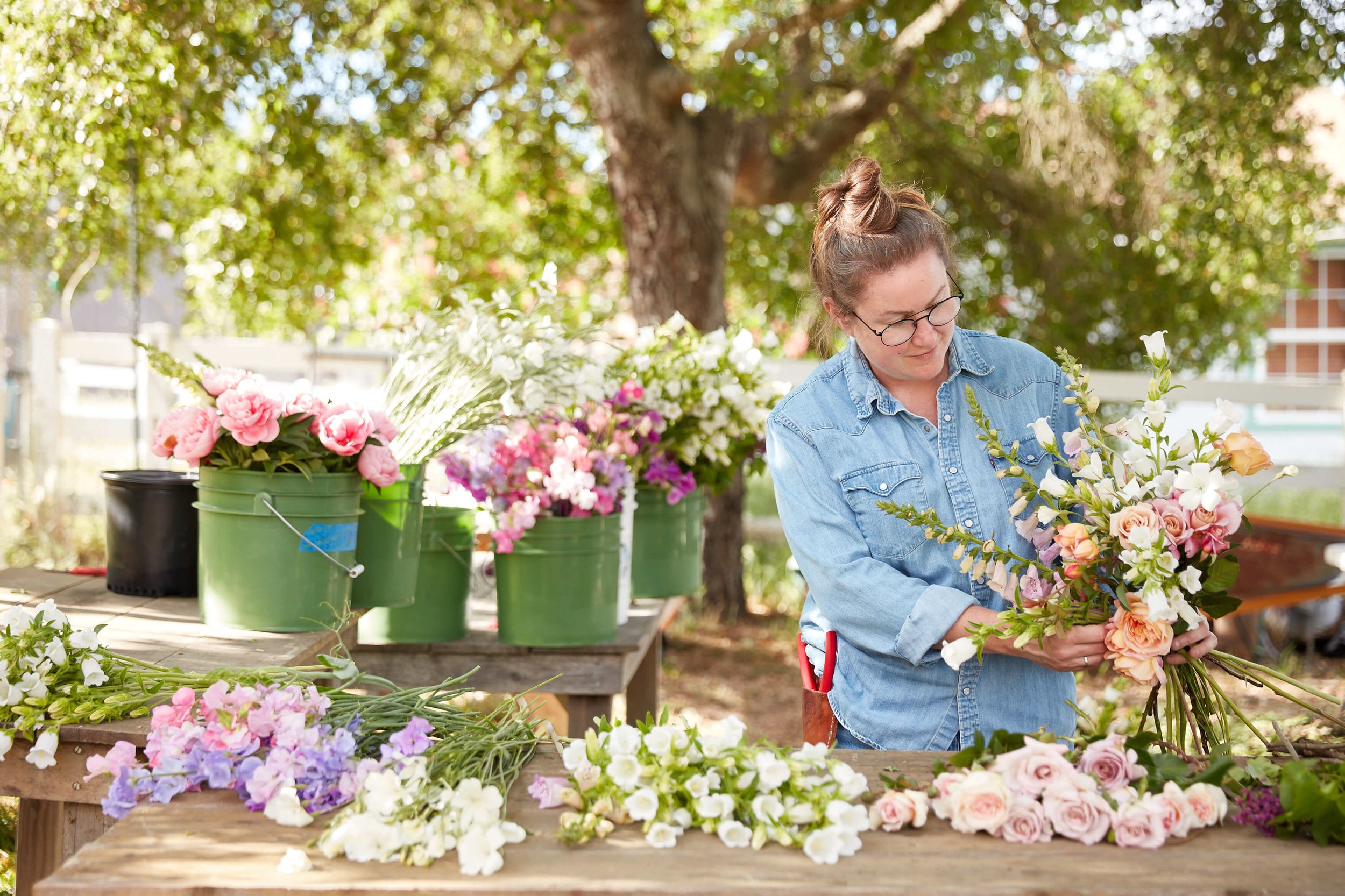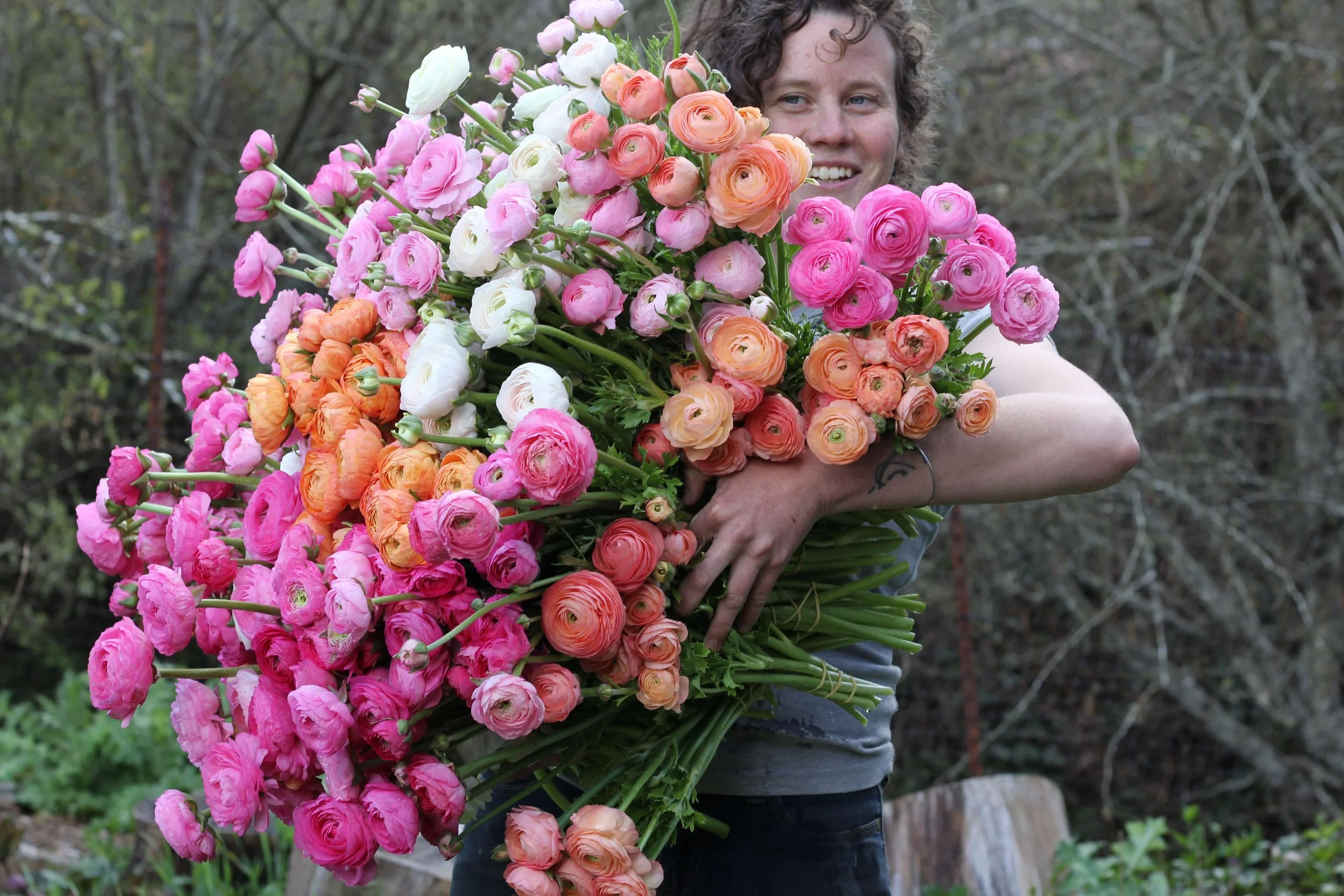Using the ‘Network Effect’ to Sell More Flowers
As flower farmers, we’ve got to look for ways to leverage any advantage we can grab a hold of. One that I’ve found to be especially helpful over the years is looking for sales to groups of customers, rather than sales one-by-one. My strategy has shifted from trying to win over one customer at a time to capturing huge swaths of them at a time.
This is where the ‘network effect’ comes into play. This is “a phenomenon whereby increased numbers of people or participants improve the value of a good or service” - think technology and apps. To relate this to our retail customers - it’s pretty hard to be a part of a group of people carrying bouquets, and not want one yourself. The key is to infiltrate existing social groups so that buying flowers feels like an integral part of each person’s membership to the group. The more people you arm with flowers, the more you’ll stoke the flames of envy in the ones without flowers. This sounds sinister, I know. But wouldn’t we all agree that everyone is better off with a bouquet?
I’ll give some great examples below. First, to illustrate an example gone wrong, think about a dating app. It’s only as good as the number and buy-in of users who signed up and made accounts, right?
Looking For Love, in All the Wrong Places
Have you all heard of one specific dating app called Famers Only? Well I have no idea what’s going on with it these days (I’m happily shacked up, thank you very much), but I remember back when it got started, a bunch of my friends got super excited about it. At the time I was in farm school in Santa Cruz, surrounded by lonely 20-something farmers. But one quick perusal and we learned that - nope - this was decidedly NOT the site for us. Even the homepage boasted mostly middle-aged men, mostly sitting on trucks, and mostly waving all sorts of flags (literal and figurative) in their profile pics. Our group of coastal hippies did not, as you might have guessed, join the site. There just wasn’t the critical mass of datable people we were hoping for. That was one network that we wouldn’t be joining.
Who Wants Flowers?
So, class, is our important take away to not be like Farmers Only? Well, no. It’s to know your audience, and to find a good cultural fit so that you can generate buzz, excitement, and buy-in, where the more people who fit the bill join, the more others want to join.
This means, when it comes to selling retail flowers, that once you’ve found an ideal customer type, you can dig in deeper to learn what kind of groups they belong to, where they find more people like them. Who do they turn to when asking for restaurant recommendations, and how do the ask? Where and how do they see the same people every week? How can you insert your flowers into the occasion?
Reach One, Reach Many
I started thinking this way for my farm during Covid. We began delivering retail bouquets from the farm in Petaluma, CA, down to San Francisco - a 90 minute drive. That means, of course, we had 90 minutes of commute time on the way down and another 90 minutes back, no matter if one bouquet sold or thirty. Once in the city, most stops were, on average, seven minutes away from one another. We calculated that deliveries cost us about $50/hr when factoring in labor, gas, and wear & tear on the delivery van. So each stop cost us the 7 minutes of driving, plus around 3 minutes to park / run the bouquet inside, equaling ten minutes or $8.30. BUT, each delivery had to cover the cost of getting to the city and back, a 3-hour trip costing us $150. If we only had ten deliveries, that meant that each had to absorb $15 of that drive, in addition to the $8.30 per stop. That’s $23.30 just of delivery COSTS. You can see why we aimed to not cross the ole Golden Gate unless we had at lease 20 orders, so that each one cost us only $15.80. If we charged a $25 delivery fee, that means that we were at least profiting a few dollars off the delivery (yes, people paid this - we were following the standards of what local florists charged).
We started to really put our focus on expanding sales in certain clusters where a network effect was starting to take place. One apartment building or another where we already had a few customers and tried promotions to get more, a group of girlfriends who lived in one neighborhood and we threw in a few extra bouquets to encourage them to spread the word even further. We sold to ten or fifteen lovely ladies who were part of a garden club, and they’d gather together at drop-off day every week at one of their homes. The more we could cut that delivery time down by focusing on these clusters, the more we’d profit (and the more appealing the long delivery day would become).
Finding Your Networks
So, here comes the fun part: brainstorming. How can you expand your retail bouquet sales by using clusters? What social groups, clubs, and hubs exist in your area? Here are some places to start:
Book Clubs
Apartment Buildings
Vegetable CSA’s (run by other farms)
Co-working Spaces
Companies & Office Buildings
Swim Teams, Tennis Lessons, Pickleball Clubs
Schools (pickup time!)
Political Groups
Town Hall Meetings
Yoga & Pilates Studios, Cross Fit Dungeons, Gyms
The sky is the limit. Where else do people spend time every week? The more we can meet our customers where they’re at, sell to groups of them at once, and get them to associate flowers with their weekly activities, the more we can grow our farm’s sales in meaningful ways. More time farming, less time selling.
Or, less time selling, more time perusing Farmers Only.



